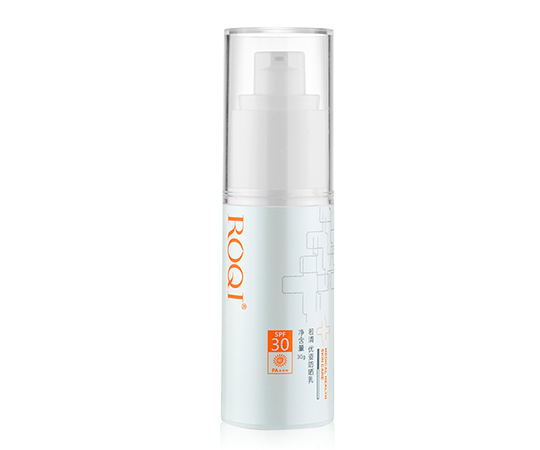+86-755-2647-5633
Service hotline:

Many people have the habit of using sunscreen for a long time, and even reapplying it multiple times a day. So, under heavy use, will most of the active ingredients in sunscreen be absorbed into the bloodstream through the skin? What is the degree of absorption
In order to understand this, the Food and Drug Administration (FDA) took the lead in conducting a study to compare the systemic exposure of four common active ingredients in different sunscreen products sold in the market under the maximum use conditions. The research results were published in JAMA

Sunscreen products are usually divided into chemical sunscreen and physical sunscreen. Chemical sunscreen can absorb sunlight, and usually contains active ingredients easy to be absorbed by the skin, such as oxybenzone, Avobenzone, octyl salicylate, octocrene, methyl Salicyl alcohol, octyl Cinnamic acid, etc. Physical sunscreen works by reflecting ultraviolet light, with typical components such as zinc oxide and titanium dioxide, which do not enter the bloodstream. Therefore, the FDA trial mainly targets chemical sunscreen components
This is a small randomized trial that recruited a total of 24 healthy adults, with an average age of 35. They were randomly divided into four groups, three men and three women as a group, receiving different sunscreen products, including two spray, one lotion and one cream. The subjects are required to apply sunscreen products 4 times a day for 4 consecutive days, and strictly follow the recommended dosage - covering 75% of the skin and applying 2mg per square centimeter. A total of 30 blood samples were collected from each subject within 7 days after the start of the test to detect the four common sunscreen ingredients, Avobenzone, oxybenzone, octocrene and ecamsule
A total of 23 people completed the study. The blood test results showed that within just one day of applying sunscreen products at the recommended maximum dosage, all four chemical components in the subjects' blood exceeded the FDA's previously recommended plasma concentration threshold of 0.5ng/mL. With the repeated use of sunscreen products, the concentration of these chemical components in the human blood continues to increase in the following days, which means there may be a certain accumulation effect
In 2016, the US Food and Drug Administration (FDA) issued an industry guideline recommending the use of maximum dose tests to evaluate the systemic absorption of sunscreen ingredients in the human body, as well as dermal carcinogenicity and embryonic toxicity. But if there is sufficient evidence to show that the blood concentration after absorption of sunscreen ingredients is below the threshold of 0.5ng/mL, and there are no other toxicological signals, additional safety studies can be exempted
The threshold setting of 0.5ng/mL is based on the following principle: below this dose, the carcinogenic risk of any unknown chemical substance is less than one in 100000
But what are the specific risks above the threshold? I don't know yet
That is to say, the clinical significance of these blood absorption data is currently unclear. In addition, this study was conducted indoors and not being exposed to sunlight or high temperatures may also affect the absorption rate of sunscreen ingredients. Due to its small size and limited population, the impact of factors such as different skin types, age, and daily use of sunscreen also needs to be tested
But undoubtedly, this study proposes a new security proposition. We urgently need further research to understand the potential health effects of these chemical components in sunscreen upon entering the bloodstream, just as drugs entering the bloodstream require safety testing
Researchers remind that considering the well-known risk of solar radiation, this research result does not mean that people should stop using sunscreen. Dr. Kanade Shinkai, a dermatologist at the University of California, San Francisco, also stressed that "long-term solar radiation may cause skin cancer and Melanoma, so people should do a good job of sunscreen."
According to the American Society of Dermatology, scientific evidence currently supports the use of sunscreen. If you really worry, the typical components of physical sunscreen are currently recognized as not absorbed and safe, and sunscreen clothing, hats, and sunglasses are also effective sunscreen methods


Mobile


MicroBlog

Mobile station


MicroBlog